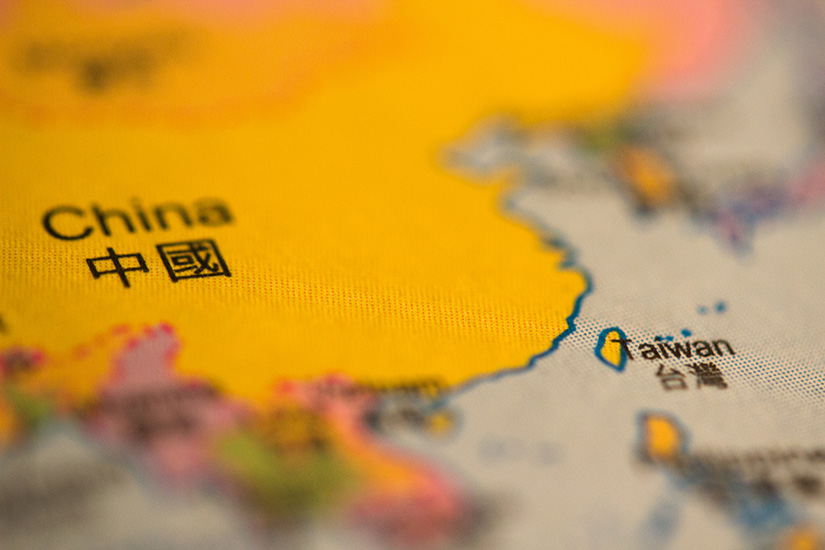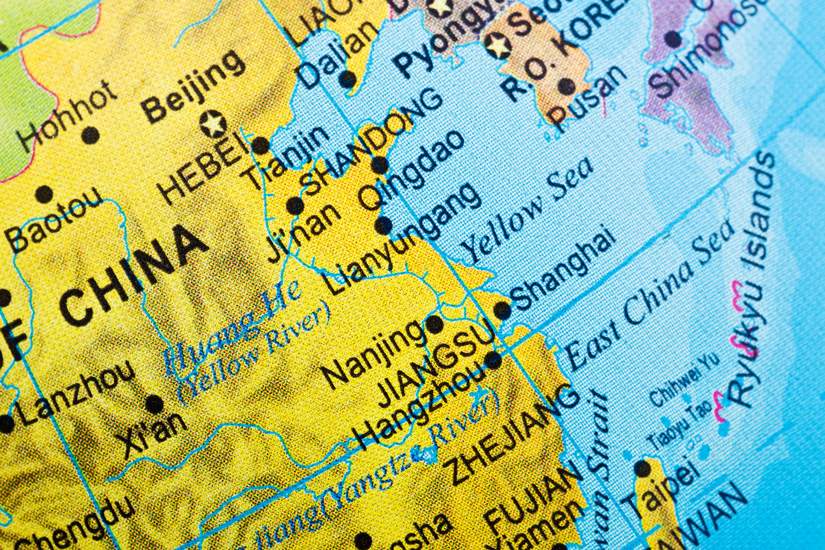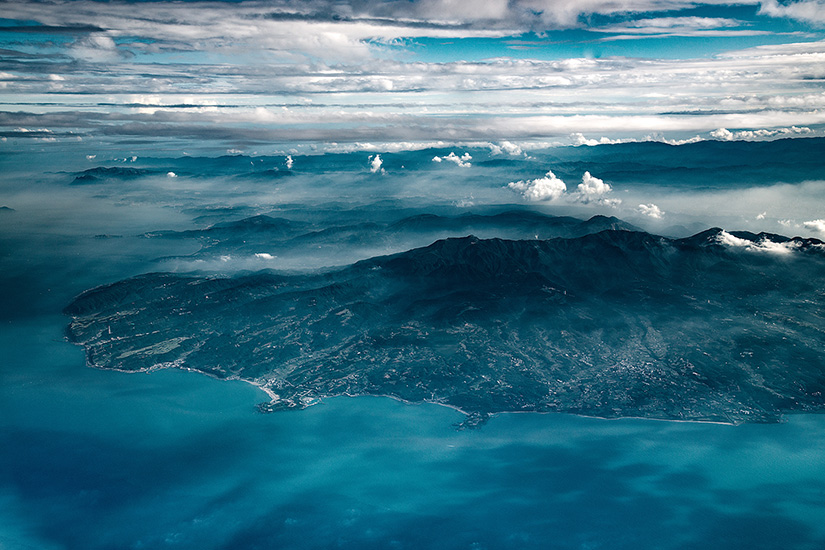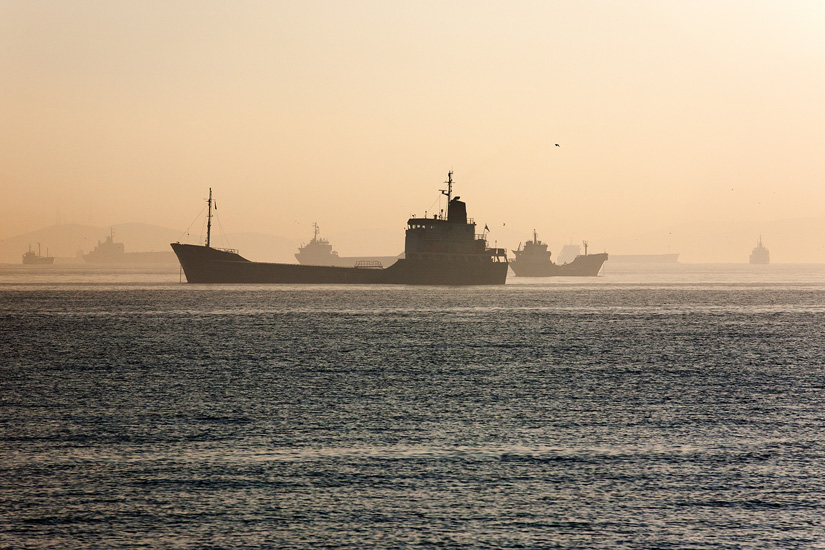Introduction
Mine Warfare[1] was operated in both world wars and most conflicts since, so they are a tactic that one should expect to be employed in the case of a Taiwan contingency. However, there has been little discussion of specific scenarios and their potential impact. This paper will therefore examine the possibility of Mine Warfare in a Taiwan contingency, including Mine-laying Warfare by China and Taiwan and the impact on Japan and its preparedness.

1.Mine-laying Warfare scenarios in a Taiwan contingency
The most famous work on Chinese Mine-laying Warfare in a Taiwan contingency that has been published publicly is “Chinese Mine Warfare[2],” published by the China Maritime Studies Institute at the U.S. Naval War College in 2009. This report posits that the geographic options for China to place mines directed at Taiwan are the west and north sides of the main island of Taiwan, excluding ports and some shallow waters. This is because the water depth off the coasts of the south and east sides of the island suddenly plunges to 2,000 meters. This renders them unsuited for mines, as moored mines and bottom mines[3]are generally used in waters of less than 200 meters deep[4]. I agree that these are China’s two best options, because, in addition to the reason stated above, the fast-flowing Kuroshio Current runs from the south to the east of Taiwan’s main island, making them particularly unsuited for moored mines.
Therefore, it can be inferred that China would lay mines near the north and south entrances of the Taiwan Strait, set minefields to block invasions by naval vessels of Taiwanese and countries supporting Taiwan, and set up minefields on the west and north sides of the main island with the intention of destroying Taiwanese vessels. Taiwan, on the other hand, may set up defensive minefields around Kinmen Island and elsewhere to the west of the Taiwan Strait, as well as to the west and north of the main island.
2.Impact of Mine-laying Warfare on Japan in a Taiwan contingency
Based on the above scenario, Mine Warfare in a Taiwan contingency would impact Japan in the two following ways:

1) Threat of and restrictions on navigation by drifting mines[5]
First, even if Japan does not want to get involved in a Taiwan contingency, it is predicted that moored mines placed by China and Taiwan will drift into water around Japan when their wires break because of tidal currents or storms. Ships in waters around Japan may strike these mines, or the mines may drift ashore, leading to human casualties and paralyzed or blocked maritime traffic.
Japan has experienced mines floating into its nearby waters before. At the end of World War II, Japan placed defensive moored mines in the East China Sea, South China Sea, Taiwan Strait, Tsushima Strait and elsewhere, and they drifted to both Japan’s Pacific coast and its coast on the Sea of Japan. Additionally, during and before the Korean War, North Korea laid Soviet-made moored mines to prevent landings, and these drifted to the Japanese coast on the Sea of Japan. According to The History of Opening Shipping Routes (Koro Keikai Shi, 航路啓開史), 1,281 drifting mines were discovered in the Sea of Japan between October 1945 to June 1952, and 481 mines were removed (unclear how many were Japan-made or Soviet-made)[6]. Additionally, many have died because they unknowingly touched mines that were activated.
In particular, since March 1949, prior to the outbreak of the Korean War, many Soviet-made mines laid by North Korea have ridden northwesterly winds from the Asian continent and the Tsushima Current, drifting to land on the Japanese coast of the Sea of Japan. These have exploded, destroying nearby houses, killing and injuring people, and causing extensive damage. As a specific example, at about 5:00 p.m. on March 30, 1949, a mine that had drifted ashore in the Kodomari area of the town of Nadachi, Niigata Prefecture (it is unclear whether it was a Japanese mine placed in the Tsushima Strait for defensive purposes or a Soviet-made North Korean mine. However, in accordance with Article 1, Clause 2 of Hague 8, mines used by the Japanese Navy employed a system that would render them inert if their mooring wire broke) exploded, killing the police officer who was trying to push it back into the sea and 62 elementary and middle school students watching the situation, and damaging or destroying 30 nearby houses[7]. Additionally, drifting mines significantly impact ship operations. For example, in 1950, in the first winter after the outbreak of the Korean War, there was a sharp increase in the number of Soviet-made North Korean mines riding the northwesterly winds of the winter atmosphere pattern. They drifted around and floated ashore from Shimane Prefecture, the Noto Peninsula, the Tsugaru Strait, the western coast of Hokkaido, and the Soya Strait[8]. As a result, in February 1952, there were no ships entering or leaving the port in Niigata, and in the Tsugaru Strait, the operation of the Seikan ferry line that connected Hokkaido and Honshu was suspended[9]. During the Korean War, with drifting mines washing ashore, local residents demanded the government address the situation, and, in 1951, the Former Japan Coast Guard established a committee to deal with drifting mines[10].
Presently, few know about these conditions apart from those directly involved and the communities affected, but there is a high possibility of Japan being similarly impacted by drifting mines from the Mine-laying Warfare that would take place in a Taiwan contingency. If mines drift into sea lanes and ports around Japan, they would not only severely restrict shipping traffic, but also pose great risk to human life. In this case, Japan would need to satisfy the requirements to recognize an “Situations that will Have an Important Influence” or a “Survival-Threatening Situation[11]” and respond[12].
There is some doubt whether mines laid in the Taiwan Strait and off the main island’s northern coast could reach Japanese waters and the Japanese coast.
Many organizations and universities have conducted studies on the movement of flotsam along the warm current of the Taiwan Strait and the wind directions there[13]. Additionally, drifting mine bodies are usually affected by both currents and winds, as part of the body is above sea level. Accounting for these factors, the following general conclusions can be drawn, despite the influence of seasonal changes and seasonal winds: The main warm current of the Taiwan Strait moving northward passes through the west side of the strait near the Chinese mainland, reaches the East China Sea, flows into the Yellow Sea and joins the main Kuroshio current, then passes near the Tokara Islands in Kagoshima Prefecture, and flows along the Pacific coast of Japan to the Pacific Ocean. The Tsushima Current flows from the Sea of Japan through the Tsugaru Strait to the Pacific Ocean.
Meanwhile, the currents to the west and north of Taiwan’s main island, unable to ride the main warm current in the strait, are thought to flow near the seamount near 123 degrees 30 minutes east longitude in the East China Sea, or counter to the current in the south[14]. Therefore, when mines laid in the west side of the Taiwan Strait near the Chinese mainland drift, some may end up in the Yellow Sea, but most will be carried by the Kuroshio Current and the Tsushima Current, carrying them to waters all around Japan. This will, of course, greatly impact Japan. However, mines laid to the north and west of Taiwan on the east side of the Taiwan Strait will drift near the seamount in the East China Sea, which is near the Senkaku Islands. Even in this case, the defense of the Senkaku Islands will be significantly impacted. If, in an effort to avoid these mines the Japan Coast Guard and the Maritime Self-Defense Force vessels restrict their vigilance activities in the East China Sea, especially around the Senkaku Islands, China may occupy the islands, placing Japan in a very difficult situation.

2) U.S. requests for mine neutralization
The second impact would come from a U.S. request that Japan deploy a Mine Countermeasures Warfare (MCMW) force.
As for the status of the U.S. Navy's MCMW ships, the Littoral Combat Ship (LCS) MCM Mission Package has been promoted through development programs for MCMW technology since the 2000s, but it has yet to reach the level planners had hoped[15]. In addition, there is a plan to decommission from service all 14 Avenger-class MCM ships (Mine Sweeper Oceans: MSOs), which were built before 1994 and are now legacy ships, by 2023. However, they are still the main element of the U.S. Navy’s MCMW[16]. In contrast, Japan's MCMW force plans to mass-produce the new FFM Mogami-class destroyers with Mine Warfare capabilities, although the number of Mine Sweeper Coastals (MSCs) with advanced MCMW capabilities has been reduced.
Thus, comparing the MCMW naval capabilities of the two countries, one can say that Japan’s capabilities are much greater. In addition to this, given the history of the participation of Japanese Minesweepers in the Korean War in accordance with GHQ's postwar mine clearance policy, the fact that the U.S. requested the dispatch of a MCMW unit to the Persian Gulf in 1991 after the ceasefire in the Gulf War[17], and the high level of capability demonstrated by the dispatched Japanese MCMW unit, there is a high possibility that the U.S. will request Japan to neutralize mines around Taiwan through summit meetings, consultations based on Article 4 of the Japan-U.S. Security Treaty[18], and “two-plus-two” consultations. Japan needs to consider during normal times how to address such a situation.
3.Japan’s preparedness for a Taiwan contingency
In Japan, former Prime Minister Shinzo Abe’s statement on Dec. 21, 2021, that “a Taiwan emergency is a Japanese emergency” has made an impact[19]. However, if Mine Warfare is considered, this is likely to become true as a matter of military rationality, not just politics. I will conclude by considering how Japan should prepare for this issue.
1) Damage prevention and response through “preparation”
In the event that Japan receives information that mines have been laid in a Taiwan contingency, the government or the National Security Secretariat (NSS) will need to immediately establish a "Ship Safety Information Office (provisional name)" and a "Drifting Mine Countermeasures Office (provisional name)" to create a framework for an all-Japan approach. An information gathering system, warning system, and mine removal system will all be necessary. For the information gathering and warning systems, it will be necessary to obtain notifications from all relevant organizations and parties, including the Ministry of Land, Infrastructure, Transport and Tourism, the Ministry of Agriculture, Forestry and Fisheries, the Ministry of Defense, the Japan Coast Guard, the police, and the SDF, as well as private merchant ships and fishing vessels, and authorities will need to send them mine warnings to keep away from waters known to be dangerous. The mine removal system will need to mobilize the Maritime SDF, the Ground SDF, the Coast Guard, the police, and other ground-based explosive and anti-terrorism explosive disposal units, and share with them the Maritime SDF’s mine removal expertise. In other words, if a large number of mines drift ashore, it will not be only the Maritime SDF’s explosive ordnance disposal unit handling them. Anticipating such a situation, Japan needs to prepare during peacetime to prevent damage and address drifting mines.

2) Preparation for and response to collective self-defense
Based on the analysis so far, when it comes to MCMW at least, one can anticipate that the U.S. military in a Taiwan contingency will request of Japan mine clearance. This is because 1) a Taiwan contingency would be subject to Article 4 of the Japan-U.S. Security Treaty; 2) during the Korean War, the GHQ issued an order to the Japanese government to deploy Mine Sweepers (MS), and the U.S. requested the dispatch of a MSC unit to the Persian Gulf; 3) the MCMW capabilities of the U.S. Navy's LCS have not been upgraded as originally planned, and all Avenger-class MSOs are to be decommissioned by 2023; and 4) Japan's MCMW capability is well developed relative to other countries, including its success in postwar route clearance operations and MCMW after the Gulf War. In addition to this, if we assume that drifting mines will enter the waters around Japan, the conditions for a “Survival-Threatening Situation” could be met. In such a case, the right of collective self-defense would be invoked, and Japan's MCMW forces would be expected to neutralize mines laid in the Taiwan Strait and its surrounding waters. The idea of a “crisis in the Strait of Hormuz” as discussed in the Diet in 2015 would become a reality as a “crisis in the Strait of Taiwan.” Policymakers must seriously consider how to address such a situation.
Conclusion
Mine Warfare has been employed in World War I and World War II, and most wars and conflicts since, including the Falklands War and the Gulf War. This is because Mine Warfare is noteworthy for its cost effectiveness and psychological impact, as may be expected of an operation said to be conducted by the weak. Additionally, as can be seen in the history of drifting mines resulting from Mine Warfare, mines also tend to leave the control of the party that lays them. Unintended damage or disruption of maritime traffic can be expected if mines are laid by a country that does not have the science, technology, and will to comply with international law, and equip them with a self-destruct device if they leaves its control. Furthermore, taking these factors into consideration, if Japan does not do its utmost to actively deter a Taiwan contingency, a “Taiwan emergency” may in fact become a “Japanese emergency,” regardless of Japan’s intentions. It is extremely important to prepare for such an event and consider Japan’s response.
(2022/02/25)
Notes
- 1 “Mine Warfare” is a tactic that encompasses both “Mine-laying Warfare,” which are the operations to place naval mines, and “Mine Countermeasures Warfare (MCMW),” which are the operations to neutralize , remove, or avoid them.
- 2 Andrew S. Erickson, William S. Murray, Lyle J. Goldstein,”Chinese Mine Warfare: A PLA Navy' Assassin Assassin's Mace' Capability,” China Maritime Studies, No.3, China Maritime Studies Institute, U.S. Naval War College, 2009, pp.51-55,90-93(accessed November 30, 2021)
- 3 Moored mines are buoyant mine’s cans (armed with sensors and explosives) tethered to a weight (anchor) that is installed in the seabed. They are typically adjusted to the depth of the target ship’s draft below the waterline so as to target the bottom of the ship. For example, when targeting a vessel with a draft of 10 meters in waters 200 meters deep, the length of the wire would be about 190 meters. If there are tidal currents, the adjustments become more difficult and there is a greater chance that the wire will break and the mine will float away. It is said that there are moored mines that can be placed in deep waters as well. Bottom mines rest on the seabed. Accordingly, when targeting surface vessels, the waters must be shallow to a certain extent for these mines to be effective.
- 4 Erickson, Murray, Goldstein, “Chinese Mine Warfare,”pp.90-93.
- 5 There are two relevant terms for this discussion: “drifting mines” and “floating mines.” Drifting mines refers to moored mines that drift because their body has separated from the wire attached to the anchor, or the wire has been cut. In international law, Article 1, Clause 2 of the “Convention A’ LA POSE DE MINES SOUS-MARINES AUTOMATIQUES DE CONTACT” (Hague 8) requires that a mine must be rendered harmless immediately upon leaving its mooring. Floating mines refers to mines intentionally set adrift under water or on the surface in an attempt to conduct indiscriminate attacks. Article 1, Clause 1 of the Hague 8 prohibits floating mines except for those designed to be rendered harmless within one hour of leaving the control of the laying party.
- 6 Ed. Association of MCM OB, The History of Opening Shipping Routes, revised edition, 2012, p. 88.(Japanese, accessed Nov. 26, 2021). This document details the history of the clearing of shipping routes in Japan from the end of the Pacific War to March 31, 1960. It is a copy and re-edited version of the original compiled by the Defense Division of the Maritime Staff Office in the Defense Agency and published on February 1, 1961.
- 7 Ibid., p. 87.
- 8 Ibid., p. 88. In March 1951, 67 drifting mines were discovered, of which 23 were removed. It is therefore likely that there are actually more drifting mines than this figure.
- 9 Ibid., p. 87.
- 10 Ibid.
- 11 There are “three new conditions for the use of force” that would permit the SDF to use force in a “Survival-Threatening Situation.” These are 1) an armed attack against not only Japan, but also against another country in close relationship with Japan that threatens the existence of Japan and poses a clear risk of overthrowing the people’s rights to life, liberty and pursuit of happiness; 2) there is no other appropriate means to eliminate such an attack, fulfill the existence of Japan and protect the people; and 3) the use of force is limited to the minimum necessary. National Security Council Decision, Cabinet Decision, “On the Development of an Uninterrupted Security Legislation to Fully Ensure the Nation's Existence and Protect the People,” July 1, 2014.
- 12 For details on each situation, see Susumu Nakamura, “The Joint Japan-U.S. Response to a Taiwan Contingency — How to Prepare and Respond,” Sasakawa Peace Foundation, International Information Network Analysis, May28, 2021.(Japanese)(Japanese).
In 2015, then-Prime Minister Shinzo Abe responded to the possibility of a crisis in the Strait of Hormuz by saying, “We do not realistically envision it.” Ed. The Yomiuri Shimbun Political News Department, “Security Related Laws: The Changing Security Regime,” Shinzansha, 2015. Pp. 45-49 (Japanese). - 13 For example, Ministry of the Environment, “Fiscal 2007 on International Reduction Measures for Drifting and Floating Garbage," March 2008, pp. 124-134; Research Institute for Applied Mechanics, Kyushu University, "Monitoring the Flow Rate through the Taiwan Strait: Observation of the Taiwan Warm Current Using Drifting Buoys," 2005, 2006.
- 14 Research Institute for Applied Mechanics, Kyushu University, "Monitoring the Flow Rate through the Taiwan Strait: Observation of the Taiwan Warm Current Using Drifting Buoys," 2005, 2006.
- 15 Yasuhiro Kawakami, "Current Status and Problems of Developing Anti-Mine Warfare Capabilities in the U.S. Navy," The Japan Society of Strategic Studies, Strategic Studies 28, March 2021, pp. 81-104.
- 16 Mark F. Cancian, “U.S. Military Forces in FY 2020 Navy,” CSIS, October 2019.
- 17 “Diplomatic documents show U.S. president requested SDF dispatch in 1990 Gulf Crisis,” Nihon Keizai Shimbun, December 22, 2021.
- 18 That article states the two countries “will consult together from time to time regarding the implementation of this Treaty, and, at the request of either Party, whenever the security of Japan or international peace and security in the Far East is threatened.”
- 19 “Former PM Abe says Japan, U.S. could not stand by if China attacked Taiwan,” Asahi Shimbun AJW, December 1, 2021.(Japanese)(accessed January 27, 2022)

